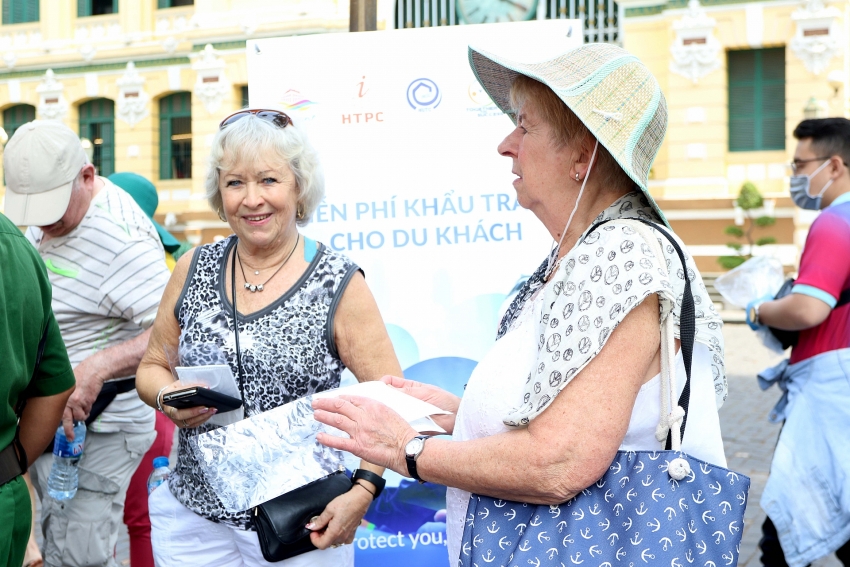Tourist arrivals drop 5-10 per cent in Vietnam due to COVID-19 impacts
 |
| Michael Kokalari, chief economist at Vinacapital |
One month has elapsed since the novel coronavirus (COVID-19) first came to light, so we now have enough concrete information and granular data to make well-educated estimates of the economic impact of COVID-19 on Vietnam.
According to the Vietnam General Statistics Office (GSO), tourism accounts for 7 per cent of Vietnam's GDP, but if the figure included the indirect contribution of tourism (tourists shopping in local stores and eating in restaurants, among others), the actual contribution is closer to 14 per cent.
 |
| International visitors in Ho Chi Minh City in February 2020. Photo: Le Toan |
Tourist arrivals to Vietnam are currently down 50-60 per cent due to COVID-19, according to the GSO, so occupancy rates at tourist-oriented hotels and resorts are currently around 20 per cent, versus the 80 per cent that would be more typical for this time of year, according to lodging industry executives (the overall hotel occupancy rate is currently down to 30- 50 per cent, in Vinacapital's understanding).
Furthermore, medical outbreaks tend to last around six months, with the maximum economic impact in the first three months, thus we expect that tourist arrivals to Vietnam would rebound later in the year after the virus is contained.
Also, Asian countries including Thailand suffered a comparable plunge in tourist arrivals during the initial phase of the SARS epidemic, but Asia-wide tourist arrivals ultimately fell by 10 per cent in 2003, so we expect Vietnam's tourist arrivals to drop 5-10 per cent this year, after having grown 16 per cent last year and 23 per cent (CAGR) over the last five years. This 5-10 per cent drop would equate to a circa 1 percentage point reduction in Vietnam’s GDP growth this year.
What the stars mean:
★ Poor ★ ★ Promising ★★★ Good ★★★★ Very good ★★★★★ Exceptional
Related Contents
Latest News
More News
- The destinations powering Vietnam’s festive season travel demand (December 04, 2025 | 18:33)
- Vietnam named among the world’s most exciting winter destinations (December 04, 2025 | 15:10)
- Phu Tho emerges as northern Vietnam’s new tourism hub (December 01, 2025 | 17:00)
- Vietjet completes Airbus A320/A321 updates ahead of deadline (December 01, 2025 | 09:49)
- Vietjet resumes Con Dao flights from early December (November 28, 2025 | 15:24)
- Free tickets, Lunar New Year promotions on offer at Vietjet Mega Livestream (November 26, 2025 | 15:32)
- Scandinavian Airlines and Vietnam Airlines broaden agreement with new routes (November 25, 2025 | 17:04)
- Halong Cruise Port welcomes over 3,100 international visitors (November 12, 2025 | 18:06)
- Vietnam.travel climbs to second place in Southeast Asia website rankings (November 12, 2025 | 18:01)
- Cat Ba named among Southeast Asia’s top island adventures (November 11, 2025 | 18:09)

 Tag:
Tag:






















 Mobile Version
Mobile Version